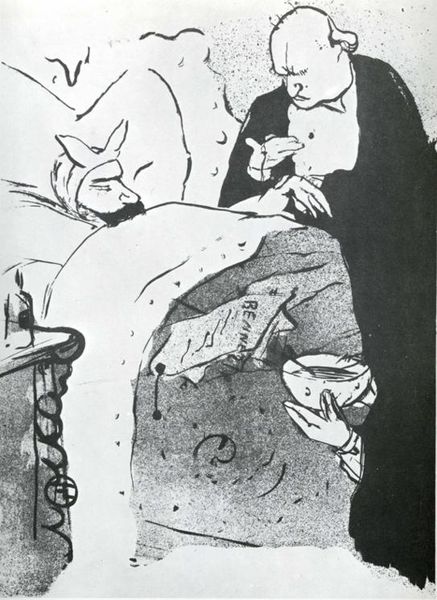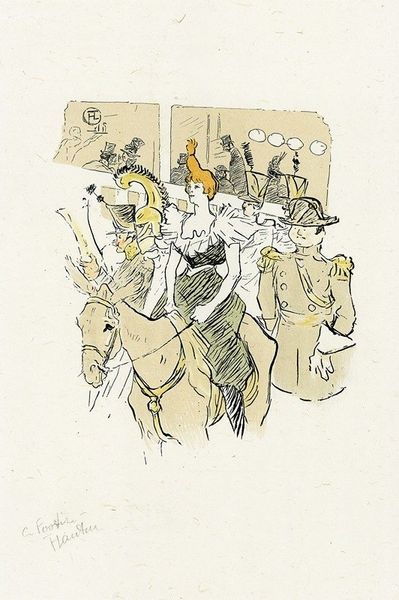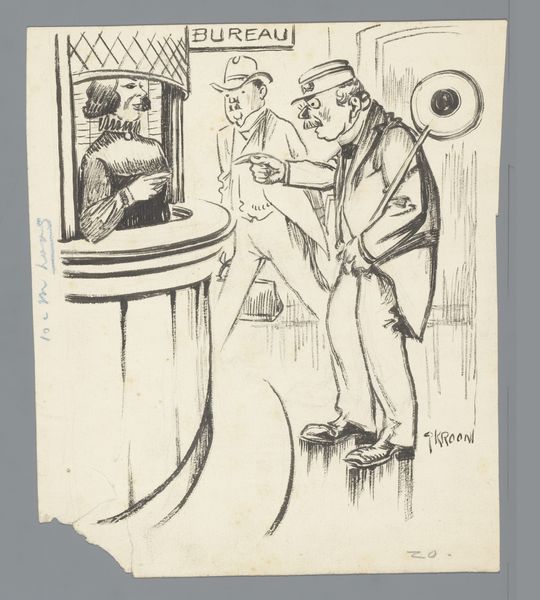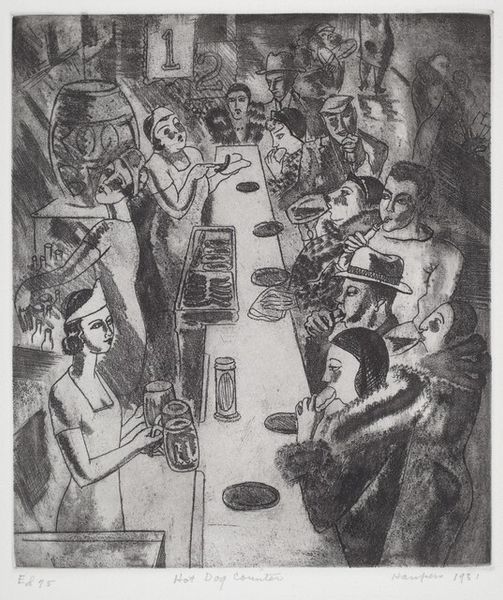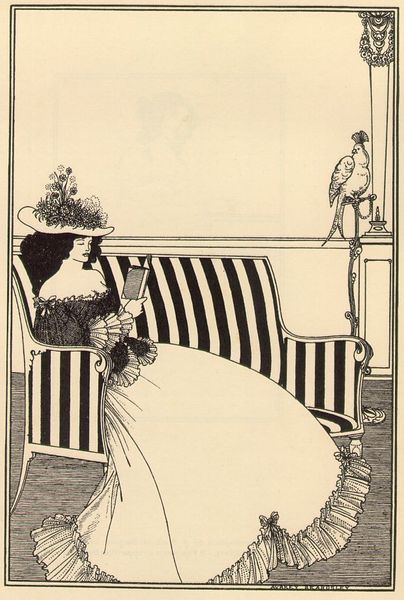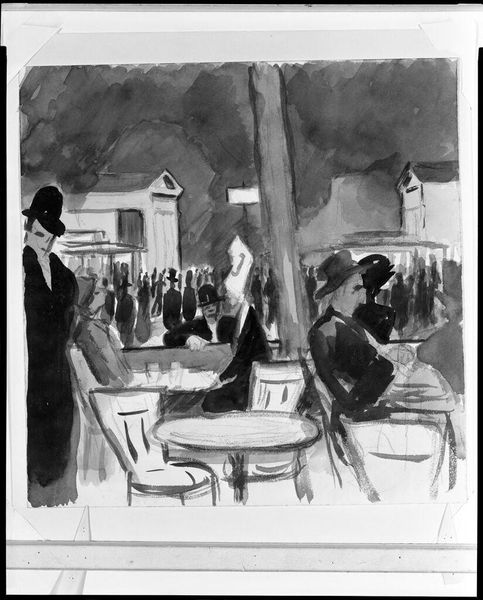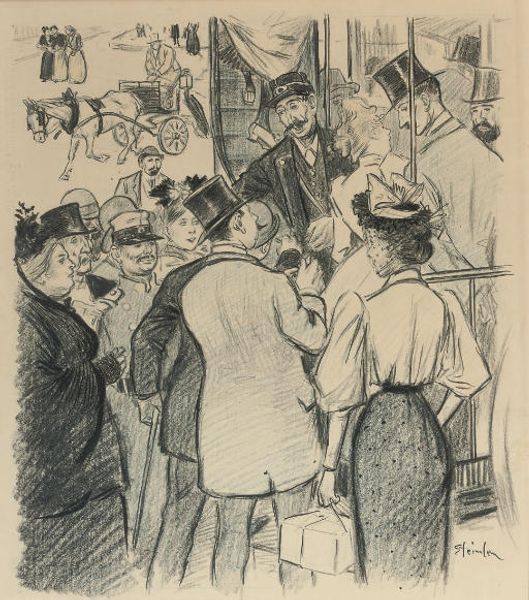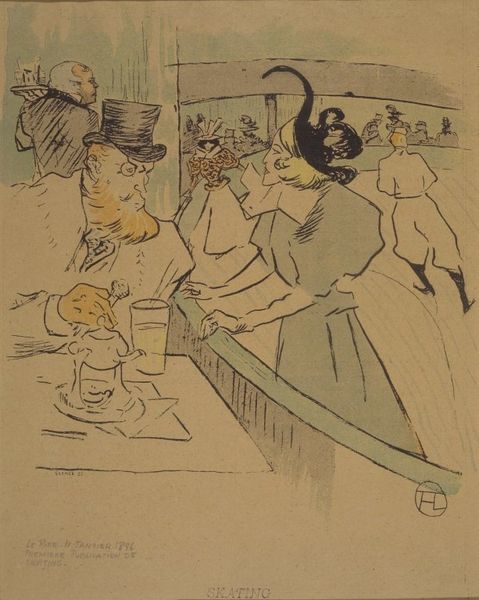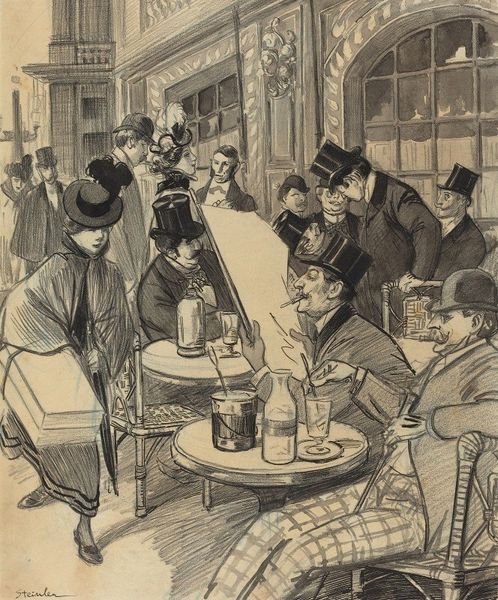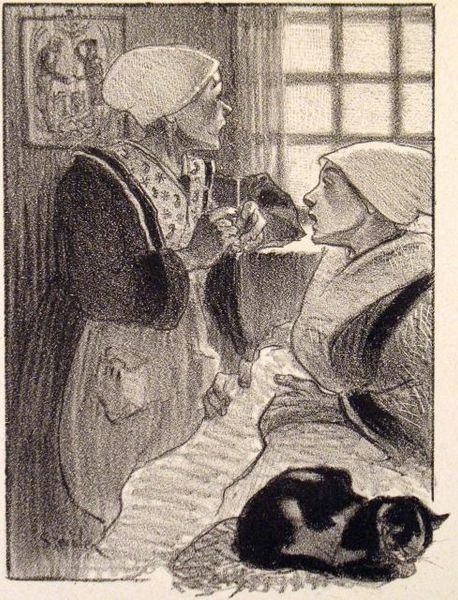
drawing, ink, pen
#
portrait
#
drawing
#
comic strip sketch
#
pen illustration
#
pen sketch
#
figuration
#
ink line art
#
linework heavy
#
ink
#
sketchwork
#
pen-ink sketch
#
expressionism
#
thin linework
#
pen work
#
pen
#
cityscape
#
genre-painting
#
modernism
#
initial sketch
Copyright: Public domain US
Editor: This is "Vienna," a 1914 pen and ink drawing by Thomas Hart Benton. I’m immediately struck by how it captures this sense of quiet melancholy, almost like a memory fading away. There's so much detail, but it all feels... introspective. What stands out to you when you look at this piece? Curator: It’s fascinating how Benton uses these delicate lines to construct not just a cityscape, but a palpable atmosphere of early 20th-century Vienna. Look closely—does the weight of the lines themselves carry symbolic meaning? Thick strokes defining the serving staff perhaps? Editor: That’s interesting, I hadn’t considered the line weight specifically. The contrast is there, definitely. The figures in the background, for instance, are rendered with much lighter, almost hesitant lines compared to the foreground. Curator: Precisely! What might that tell us? Perhaps the fleeting nature of these background figures speaks to Benton's broader commentary. They seem almost ghostlike, anonymous within the bustling cafe setting. What continuities and ruptures of the European painting traditions do you observe here? Editor: I guess it adds to that sense of fleeting memories. They are there, but not quite tangible. In terms of tradition... I see elements of Expressionism in the emotionality, but the subject matter feels very modern. Curator: Indeed! The stylistic departure hints at modernism but with expressionist sensibilities. Notice the symbolism of the empty wine glass? Editor: Yes, like a feeling of longing. Curator: A cultural symbol deeply rooted in literature and painting to invoke love and loss. The piece really shows the power of subtle symbols carrying larger emotions. Thank you for opening my eyes further to this world! Editor: I'll remember the significance of even simple lines. It has been so insightful looking closer today!
Comments
No comments
Be the first to comment and join the conversation on the ultimate creative platform.


